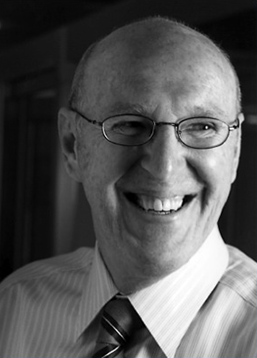
Leaders in medical advertising are always multitalented individuals. You cannot head up organizations of the scope of ad agencies and not have some capacity for all the ingredients of the job—creativity, marketing, research, organization, finance, recruitment, and, the intangible, leadership. Members of the Medical Advertising Hall of Fame have been outstanding in certain of the disciplines of our business—copy, design, entrepreneurial judgment, etc—but they have always possessed instincts for the other pieces of the equation that produce a successful medical advertising organization. Even given this generalization, the mix of proficiencies evident in Clyde P. Davis’ career puts him in a special place among MAHF members. Davis is a fascinating combination of what appear to be diverse talents.
Davis got his start when a teacher recognized his ability and pushed him out of his South Side Chicago environment into an art program at the University of Illinois. He had to work his way through college, doing everything from washing dishes to painting houses. Once in the commercial world, he entered pharmaceutical advertising through the training grounds of McAdams, Sudler & Hennessey, and L.W. Frohlich, before moving to Klemtner Advertising. There, and at Cline Davis & Mann, he worked on Pfizer products, winning recognition for his work within the industry and at creativity competitions. He won a Clio for the first Rx ad ever honored.
The following work established Davis as a creator with a strong feel for graphic imagery and also a flare for striking sales force materials:
Jack Slonaker, chairman and COO at CDM, tells of Davis’ financial skill in finalizing a commitment to new office space: “He would not sign. He was waiting, waiting. And while he was waiting they were throwing more things in to sweeten the pot. He was a great negotiator and always made things happen on his terms.”
Carol DiSanto, a CDM partner and director of client services, remarks on the apparent paradox: “How can such an unbelievable creative person be so in tune with the bottom line in finance, stocks, and investments? The guy’s a master.”
Davis displayed traits common to agency leaders. He expected excellence.
“His standards are high,” says Cline, “and he had a short attention span for people who did not come forward quickly with what he liked. He would demand a lot [but] Clyde was never willing to ask anything of anyone that he wouldn’t do himself.”
On Davis’ expectations, Ralph Skorge, a CDM partner and creative director for art, adds, “A tough guy to work for. But it makes you better. I learned a lot. He wasn’t generous with praise. But when you got it, you were hooked. It was an addicting drug to have him say ‘That’s good.’ This guy recognized great work and when you did it. He praised you, and you knew it.”
Davis also showed leadership in advocating new technology for CDM and in being aggressive in competing with consumer agencies for DTC business. Ed Wise, the agency’s president and CEO, describes him as “something of a visionary.”
“His creativity was expressed in a lot of ways, but one of them was in expanding the business in new directions in terms of DTC, the computer, advancing computer abilities, in film and video,” explains Wise. “He was always looking for trends and trying to put the agency on the cutting edge.”
Cline seconds this view of Davis: “He wanted us to assume new abilities, new roles. We bought all the equipment to edit our own films when we started doing DTC. He was the one who made this enormous investment in computers when people were just still dabbling in them.”
His colleagues describe Davis as an extremely soft spoken. Frank Hughes, an MAHF member who worked with him at Klemtner, says he speaks “pianissimo and so you are leaning in to hear him.” People have trouble remembering when he even raised his voice. In fact, Cline’s opinion is that Davis would lower his voice to attract attention and make his points more emphatic, which proved effective in high-decibel meetings.
Davis is a complex meld of a drive for success, creativity, business acumen, low-key reserve with an underlying aggressiveness, demanding standards, and a commitment to new technology that has all come together. What has made it work? Ed Wise explains, “Clyde was very much driven by the idea of creating something beautiful, creating something that other people would admire, creating something that was great. I think whatever he attacked in his life aggressively and in a disciplined manner [was] something that people would be attracted to and stand back and say that was a contribution. He saw the agency as one of his creative canvasses as much as it was one of his ads.”